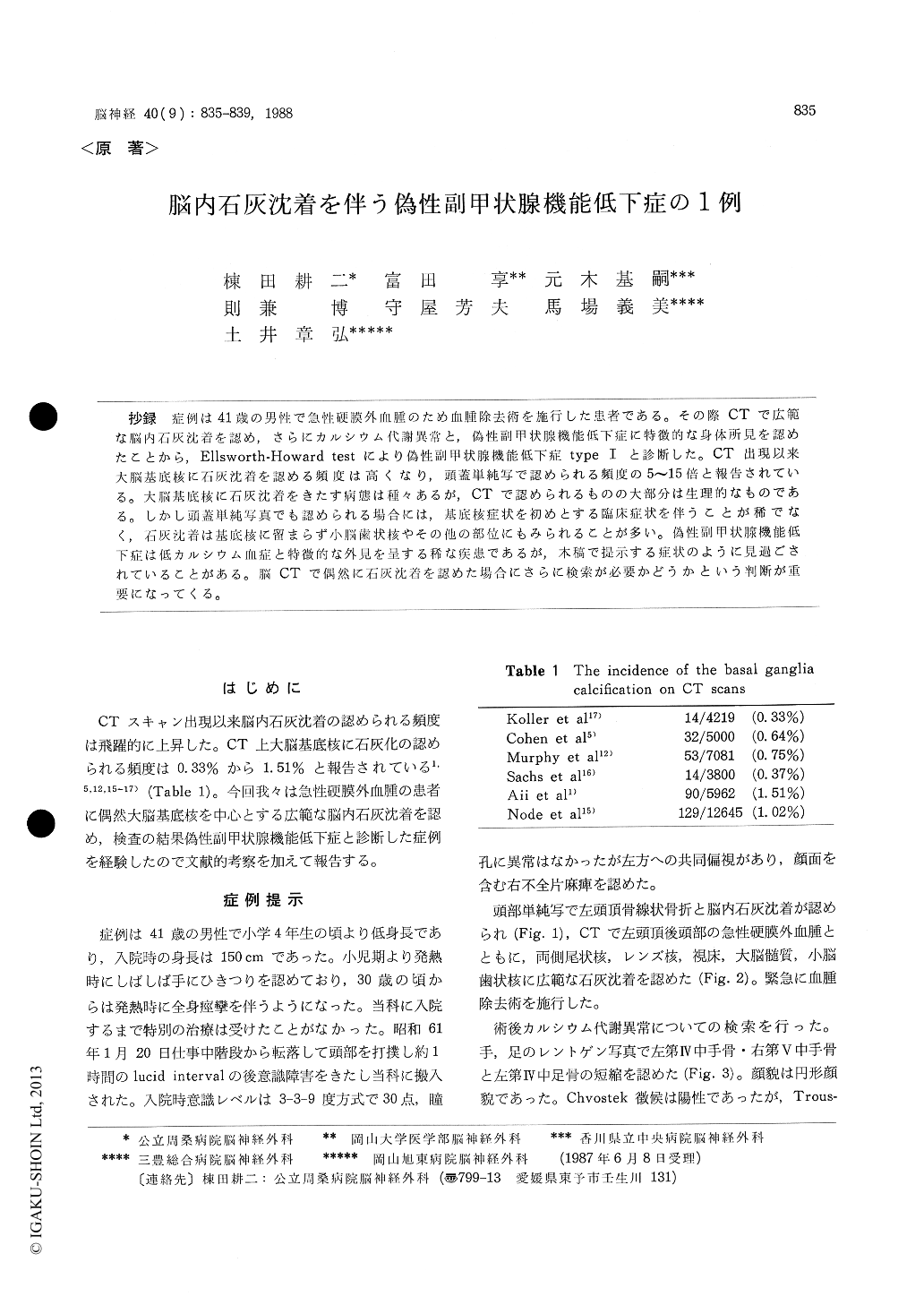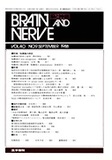Japanese
English
- 有料閲覧
- Abstract 文献概要
- 1ページ目 Look Inside
抄録 症例は41歳の男性で急性硬膜外血腫のため血腫除去術を施行した患者である。その際CTで広範な脳内石灰沈着を認め,さらにカルシウム代謝異常と,偽性副甲状腺機能低下症に特徴的な身体所見を認めたことから,Ellsworth-Howard testにより偽性副甲状腺機能低下症type Iと診断した。CT出現以来大脳基底核に石灰沈着を認める頻度は高くなり,頭蓋単純写で認められる頻度の5〜15倍と報告されている。大脳基底核に石灰沈着をきたす病態は種々あるが,CTで認められるものの大部分は生理的なものである。しかし頭蓋単純写真でも認められる場合には,基底核症状を初めとする臨床症状を伴うことが稀でなく,石灰沈着は基底核に留まらず小脳歯状核やその他の部位にもみられることが多い。偽性副甲状腺機能低下症は低カルシウム血症と特徴的な外見を呈する稀な疾患であるが,本稿で提示する症状のように見過ごされていることがある。脳CTで偶然に石灰沈着を認めた場合にさらに検索が必要かどうかという判断が重要になってくる。
Intracerebral calicifications, especially in the basal ganglia, are observed in many kinds of diseases. A 41-year-old man is reported, who suffered from an acute epidural hematoma and underwent surgery to remove the hematoma. We detected very extensive intracerebral calcification on CT. Laboratory findings revealed hypocalcemia and hyperphosphatemia. General physical exami-nation revealed characteristics typical of pseudo-hypoparathyroidism. The patient was diagnosed as having pseudohypoparathyroidism type I by the Ellsworth-Howard test. Since the advent of CT, the incidence of basal ganglia calcification has increased. CT is 5 to 15 times more sensitive than skull radiography in the detection of intra-cerebral calcification. Although many pathological states can cause basal ganglia calcification, most of the calcifications which are recognized on CT scans are physiological. But in cases in which basal ganglia calcifications are recognized also on plain radiographs, various kinds of symptoms in-cluding ones of basal ganglia origin are often recognized, and calcifications often extend to regions other than basal ganglia, eg. cerebellum, thalamus, etc. Pseudohypoparathyroidism is a rare disease which presents hypocalcemia, some charac-teristic physical appearances, and dementia. It is important to decide whether further examinations are necessary or not, when basal ganglia calcifica-tion is recognized incidentally on CT scan.

Copyright © 1988, Igaku-Shoin Ltd. All rights reserved.


